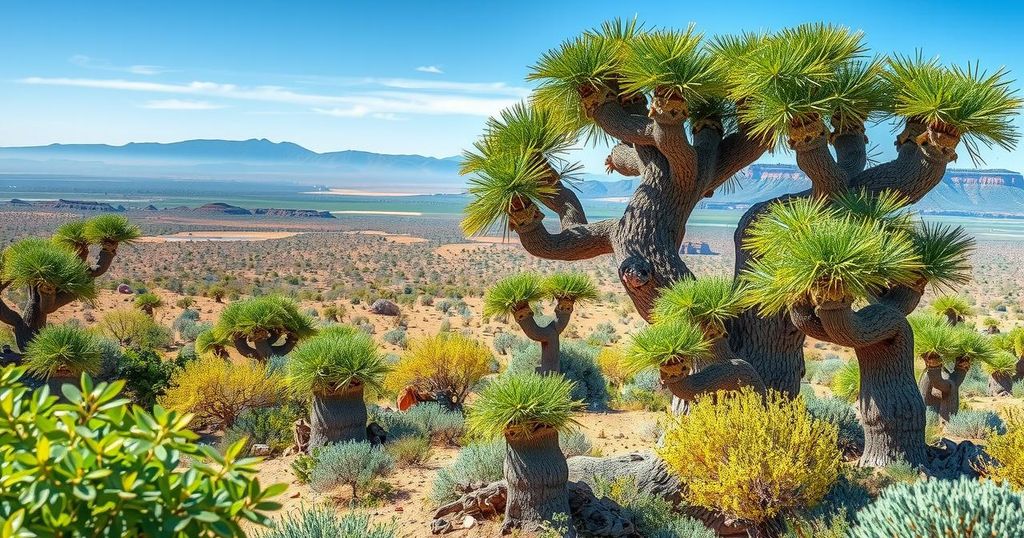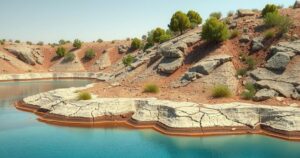The Hidden Carbon Potential of Namibia’s Dry Woodlands

This article discusses the carbon sequestration potential of Namibia’s dry woodlands, emphasizing the importance of small trees and shrubs in carbon storage. A recent study reveals that these smaller plants contribute nearly one-third of the total woody biomass, underscoring the need for more inclusive carbon assessments. Recognizing their value is crucial for effective conservation policies and climate action, with implications for funding and global environmental agreements.
Carbon sequestration refers to the process by which vegetation captures and stores carbon dioxide (CO2) from the atmosphere through photosynthesis. During this process, plants convert CO2 into organic matter, including wood, leaves, roots, and soil carbon. This ability is critical in addressing climate change, as woodlands serve as natural solutions to reduce atmospheric CO2 levels and combat global warming.
Traditionally, forests have been recognized for their carbon storage capacity, with large trees storing carbon for extended periods. However, in Namibia’s dry woodlands, small trees and shrubs significantly contribute to carbon sequestration, contrary to previous beliefs. A recent study reveals that neglecting these smaller species could lead to considerable errors in global carbon budget calculations, emphasizing the need for accurate assessments of carbon contributions from all types of vegetation.
The research conducted in Namibia’s northern and northeastern woodlands indicates that small trees and shrubs account for nearly one-third of the total woody biomass. Notably, the study discovered that woodland structure greatly influences the growth of small trees and shrubs. When the canopy is open, it allows more sunlight for understorey plants, promoting their growth and carbon storage capacity. In contrast, dense canopies dominated by large trees can inhibit the growth of smaller vegetation, reducing their biomass contributions significantly.
Most existing carbon assessments tend to overlook trees smaller than 5 cm or 10 cm in diameter, leading to a serious underestimation of total carbon storage within dry woodlands. This oversight has far-reaching implications, including limited funding opportunities in carbon credit programs and insufficient conservation policies that neglect smaller trees and shrubs. By improving measurement techniques, we can enhance the management and protection of these vital ecosystems.
The findings from this study are essential for global environmental agreements and climate policies, such as the Carbon Credit Markets and the Intergovernmental Panel on Climate Change. Neglecting small trees in carbon assessments may prevent Namibia’s dry woodlands from fully receiving deserved financial benefits. Hence, it is crucial to acknowledge the total carbon storage potential of dry woodlands, shifting conservation efforts from focusing solely on rainforests to include all forest types.
To maximize carbon storage, climate policies must consider the entire woodland structure and the significance of understorey vegetation. As climate change continues to impact forests globally, every carbon reserve is vital. The hidden carbon potential of Namibia’s dry woodlands underscores the necessity for scientists, policymakers, and conservationists to reassess how they value and measure carbon in these ecosystems. By facilitating the inclusion of understorey plants in carbon accounting, Namibia could enhance its prospects in international climate initiatives and carbon markets.
In conclusion, recognizing and valuing the carbon potential of Namibia’s dry woodlands can enhance conservation strategies, facilitate access to global funding, and foster robust climate action for future generations. The research spearheaded by Hermane Diesse emphasizes the need for re-evaluation of carbon assessment practices in dry woodland ecosystems, urging a collaborative approach to better understand and protect these vital resources.
In conclusion, the study highlights the significant role that small trees and shrubs in Namibia’s dry woodlands play in carbon sequestration. Acknowledging these contributions is crucial for accurate carbon assessments and effective conservation strategies. By incorporating understorey vegetation into carbon calculations, Namibia can increase its participation in carbon credit markets, better protect its ecosystems, and enhance climate action efforts for the future.
Original Source: www.namibian.com.na






